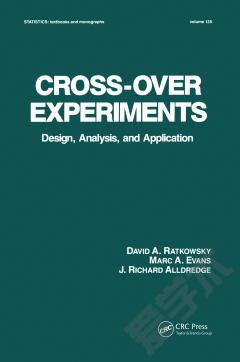Design and Analysis of Cross-Over Trials
Abstract This chapter provides an overview of recent developments in the design and analysis of cross-over trials. We first consider the analysis of the trial that compares two treatments, A and B, over two periods and where the subjects are randomized to the treatment sequences AB and BA. We make the distinction between fixed and random effects models and show how these models can easily be fitted using modern software. Issues with fitting and testing for a difference in carry-over effects are described and the use of baseline measurements is discussed. Simple methods for testing for a treatment difference when the data are binary are also described. Various designs with two or more treatments but with three or four periods are then described and compared. These include the balanced and partially balanced designs for three or more treatments and designs for factorial treatment combinations. Also described are nearly balanced and nearly strongly balanced designs. Random subject-effects models for the designs with two or more treatments are described and methods for analysing non-normal data are also given. The chapter concludes with a description of the use of cross-over designs in the testing of bioequivalence.
{{comment.content}}








 京公网安备 11010802027623号
京公网安备 11010802027623号